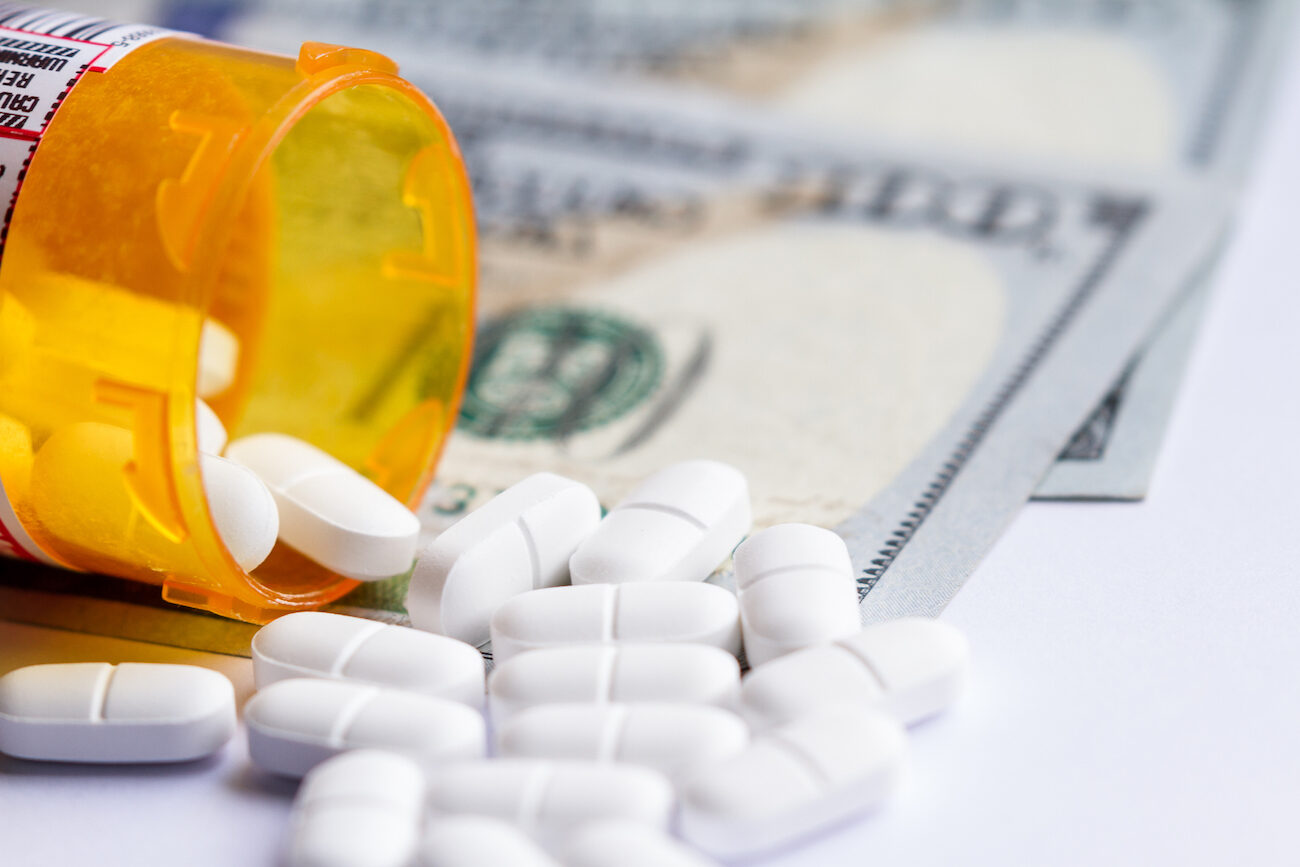© 2025 CSRXP- All Rights Reserved

BIG PHARMA EARNINGS WATCH: GLAXOSMITHKLINE, AMGEN, ASTRAZENECA
Nov 11, 2022
Big Pharma Giants Notch Expectation-Busting Earnings After Continuing to Hike Drug Prices
A final round of Big Pharma third quarter earnings reports from GlaxoSmithKline, Amgen and AstraZeneca showed the pharmaceutical industry continues to ride high on bigtime profits fueled by continued bigtime price-gouging. Driven by increasing revenue from pharmaceutical divisions and strong COVID-19 vaccine and therapeutic sales, all three brand name drug makers topped Wall Street expectations this past week after hiking prices on products in their portfolios over the last two years.
GlaxoSmithKline
- GlaxoSmithKline posted sales of $8.98 billion for the quarter, up 18 percent.
- The company beat analyst earnings and revenue expectations for the fourth time in the last four quarters.
- Sales across all business segments increased, driven by additional sales from the brand name manufacturer’s COVID-19 antibody drug, Xevudy.
- Oncology sales were up 19 percent year over year, driven by sales of the blockbuster respiratory treatment and cancer drug Zejula, which were up 11 percent in Q3.
Amgen
- Amgen experienced a new 52-week high in its share price this week following Q3 reports that topped Wall Street forecasts.
- The drugmaker surpassed Wall Street earnings and revenue expectations, reporting net income of $2.14 billion and revenue of $6.65 billion.
- Blockbuster rheumatoid arthritis drug Enbrel brought in $1.1 billion sales, making it the company’s top-selling drug in Q3.
- Over the last four quarters, the company has surpassed consensus EPS estimates four times.
AstraZeneca
- AstraZeneca topped Wall Street analysts’ profit and revenue forecasts in the third quarter.
- Revenues for the company came in at $10.98 million for Q3, up 11 percent.
- Sales of AstraZeneca’s oncology portfolio rose 24 percent, driven by strong sales from cancer drugs Tagrisso, Imfinzi and Enhertu.
- The company’s third-quarter performance was so strong, AstraZeneca lifted its profit guidance for the year.
The strong earnings calls come after all three brand name drug manufacturers engaged in significant price hikes over the last two years.
GlaxoSmithKline
- GlaxoSmithKline raised prices on more than 30 drugs this year, including on blockbuster respiratory treatment and cancer drug Zejula.
- GSK hiked prices on two branded medications last summer.
- In 2021, GSK increased prices 34 times, including on top-selling respiratory drug Trelegy Ellipta.
Amgen
- Amgen started the year hiking prices more than a dozen times– including on popular drugs Enbrel and Otezla – and raised prices on nearly 20 more drugs this July.
- A recent U.S. House Committee on Oversight report found that Amgen hiked prices of blockbuster drugs Enbrel and Sensipar to meet revenue targets.
- According to The Institute for Clinical and Economic Review (ICER), price hikes on the company’s cancer drug Neulasta were not supported by new clinical evidence and accounted for an unnecessary increase in U.S. drug spending of nearly $500 million from 2017-2018.
AstraZeneca
- The brand-name drug maker has hiked prices on 27 medications this year, including on eight drugs this summer.
- In 2021, AstraZeneca increased prices on 19 different drugs – including on hyperkalemia drug Lokelma and blockbuster drug Symbicort.
AstraZeneca has a long history of hiking prices on Americans struggling to afford their medications:
- AstraZeneca Was One Of Several Companies To Participate In Big Pharma’s Biennial Price Hikes This Summer– despite the unprecedented economic uncertainty facing millions of Americans grappling with the pandemic – by increasing prices on 18 drugs, including on popular cholesterol drug Crestor and blockbuster drug Symbicort. (Tori Marsh, “Live Updates: July 2020 Drug Price Increases,” GoodRx, 8/3/20)
- In Anticipation Of Generic Competition For Its Blockbuster Anti-Ulcer Drug Prilosec, AstraZeneca, “Introduced And Pushed Doctors To Prescribe” A New Drug “Which Was Only Slightly Chemically Different From Prilosec But Had 13 Years Of Patent Protection Left. “The Report Estimates The One-Year Cost Of This Product Hop To Be Almost $2.4 Billion. “The anti-ulcer drug Prilosec was, at one time, the top drug by sales in the United States. In 2000, before its scheduled patent expiration the following year, Prilosec sales reached $4.1 billion (NIHCM Foundation, 2001). In anticipation of generic competition for its blockbuster product, AstraZeneca, Prilosec’s manufacturer, introduced and pushed doctors to prescribe its new anti-ulcer drug, Nexium, which was only slightly chemically different from Prilosec but had 13 years of patent protection left. A lawsuit alleging that AstraZeneca engaged in anticompetitive behavior with Prilosec and Nexium was dismissed in early 2008 when a district court found that AstraZeneca “did not eliminate consumer choice” (Callan, 2015). But antitrust experts have pointed out that the court’s reasoning ignores “the realities of drug markets,” where a prescription for a single-source brand drug removes the option of a generic version (Carrier and Shadowen, 2016).” (Alex Brill, “The Cost of Brand Drug Product Hopping,” Matrix Global Advisors, 9/11/20)
Read more on Q3 earnings from Big Pharma giant Johnson & Johnson HERE.
Read more on Q3 earnings from Merck, Bristol Myers Squibb, and Novartis HERE.
Read more on Q3 earnings from Pfizer, AbbVie, Sanofi, and Eli Lilly HERE.
Learn more about market-based solutions to hold Big Pharma accountable and lower prescription drug prices HERE.
